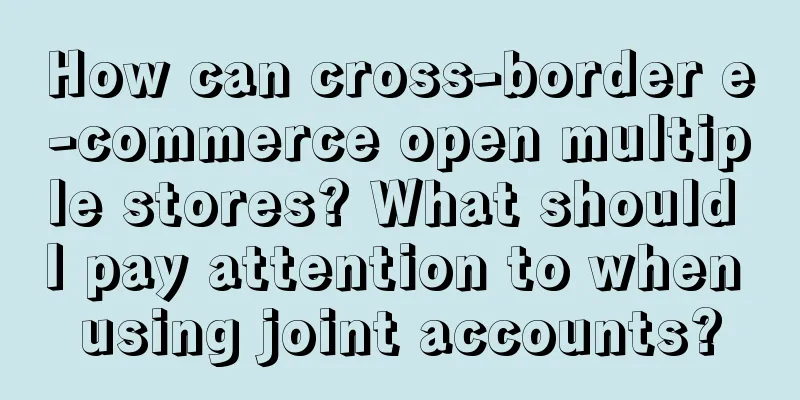Four hardcore ways to make money with IP on video accounts

“WeChat is the ID card of the Internet era, and Video Account is the personal business card of the Internet era.” Liao Shijian, vice president of Shidian Reading, said this at a previous private video account theme meeting for Jianshi members. With the continuous development of the WeChat ecosystem, video accounts have gradually become the focus of attention for businesses and creators. It not only provides a wealth of creative tools and display platforms, but also provides multiple ways for commercial realization. In this process, the commercial development of video accounts has also shown some significant characteristics and trends. In daily observations, Liao Shijian found that knowledge bloggers have four hardcore ways to make money on video accounts. In addition, today's video accounts are not only a platform for ordinary people to share their daily lives, but also have very obvious social attributes. Users can interact with other users through likes, comments, sharing, etc., forming a social network. This social mechanism not only helps to improve user stickiness and activity, but also provides more marketing opportunities for merchants. By establishing connections with users, merchants can better convey brand information and promote products and services through video accounts. Next, follow Jianshi back to the private sharing meeting to listen to more ways to make money from the knowledge bloggers of the video account. The following is a live sharing record, with some content deleted as follows, enjoy: 1. Changes in perspectives on content entrepreneurshipLet's first compare the difference between self-media and bloggers. First, we need to understand the core attributes of self-media. The reason why self-media is called "media" is because it has the core characteristics of media, that is, it revolves around the transmission of information. Therefore, the main function of self-media is still to transmit various information. We usually call this information "things". Careful observation will reveal that self-media is gradually changing into the form of information flow, which is very similar to the way we browse the headlines in our daily life. Secondly, self-media has an important characteristic, which is sensitivity to and follow-up of hot topics. However, in recent years, we have found that the number of readers of public accounts has decreased compared with previous years. This is because when opening a public account, readers will find that a large amount of the content is homogenized, and many public accounts will make similar reports when hot events occur. In addition, we have noticed that in the era of less developed information, people would pay more attention to hot events. However, nowadays, with abundant information sources and extremely fast information dissemination, the situation in which people rushed to report hot news has changed. Today's readers pay more attention to the uniqueness and value of content, rather than just pursuing speed. In the era of self-media, public accounts have replaced some of the functions of traditional media magazines and newspapers. However, in recent years, we have found that the development of public accounts has gradually faced difficulties. The reason is that with the development of information, readers have developed a habit of "reading and leaving". This habit causes readers to leave quickly after reading an article and no longer pay attention to other content. This makes it increasingly difficult for public accounts to attract new readers. In the future, readers may pay more attention to information from comprehensive information apps, and not care too much about where the content comes from. Therefore, the habit of "reading and leaving" will make it increasingly challenging to increase followers. At present, we-media is facing many difficulties. Now let's explore why bloggers have gradually become the focus of people's attention. In a broad sense, the lifestyle represented by bloggers is more of an entry point, so it can be defined as information. Bloggers not only pursue hot events, they also focus on the transmission of experience or knowledge. There is a certain difference between the two, which has a decisive influence on the subsequent positioning. What bloggers pursue is very similar to the notes or life strategies we are talking about today. Interestingly, many of my friends around me have failed to succeed in their attempts to run public accounts and self-media. Although their attempts on Douyin have also failed to achieve significant results, they have achieved certain results on Xiaohongshu. I believe that many of you here are also loyal users of Xiaohongshu. In fact, many people who originally followed public accounts have gradually turned to Xiaohongshu. The "Little Green Book" product that WeChat was previously testing may be designed to respond to this trend. Why do people turn to Xiaohongshu? This is because when users browse Xiaohongshu, they are exploring all kinds of new things and interesting content in life. This is exactly where it echoes the life strategy we discussed earlier. Although I am not an in-depth user of Xiaohongshu, I am very familiar with the content of various up masters on Bilibili. I found that in the content ecology of bloggers, users not only browse to obtain information, but they are more inclined to collect the content they like. For example, before Chinese Valentine’s Day, many bloggers will share the best gifts for boyfriends/girlfriends, and users may collect these contents for future use. Similarly, for users with children, when summer vacation comes, they will collect which places are suitable for taking their children to play. Compared with pure information content, bloggers are more likely to attract fans and expand their influence. With the development of self-media, the types and quantity of information are increasing, and the accuracy and comprehensiveness are also improving. This is exactly the embodiment of the change in mentality we have experienced in content entrepreneurship. When we explore the entrepreneurial attributes of different content platforms, we can classify them based on whether they focus more on people or content. Although this classification is not rigorous enough, it can help us better understand content entrepreneurship. First of all, when we open some platforms, the first thing we think of is the people we follow. For example, on Weibo, Xiaohongshu and Bilibili, we usually follow the people we like first. We think of the people we follow on Weibo, the people we follow on Xiaohongshu, and the up-loaders we like on Bilibili. These platforms have strong blogger-like attributes, and they closely connect us with the bloggers and content we follow. On the other hand, when we want to get news or hot information, we will choose some platforms to browse the information flow. For example, platforms such as WeChat Official Accounts, Toutiao, and Zhihu provide a lot of information and articles. On these platforms, we can easily browse the latest news and hot events. These platforms have strong content attributes and provide us with rich and diverse content. In addition, platforms such as Douyin and Video Number have both blogger attributes and content attributes. On these platforms, we can follow our favorite bloggers and easily browse a lot of information. These platforms provide us with a variety of people and content. Does that mean that Video Account is equal to Douyin? In my opinion, Douyin and Video Account are different. Sometimes we also wonder how WeChat positioned Video Account when developing it? Because its positioning will determine our understanding of the essence of things. Zhang Xiaolong's positioning of the video account is very interesting. He believes that the real meaning of the video account is not the video, but the "account". We were confused by this sentence at the time. What does "in the account" mean? Later we understood, because in essence, Douyin is an information flow distribution platform that uses a large amount of short video content to accurately match users. The video account is different. It is more of a person’s identity. On the social platform of WeChat, identity is a very important label. Looking at the official interpretation, Video Account is described as a super connector that connects public accounts, Moments, mini programs and corporate WeChat, and is an atomic content component. There is also an official statement that in the future, Video Account will become the only public C-end business card. This means that through the video account you can watch a person’s videos and live broadcasts and learn more about this person. I think WeChat is gradually becoming a personal ID card in the Internet age. Now when we log in to many apps, we don’t need to register, we can just log in with WeChat. WeChat is bound to our mobile phone number and ID card. Therefore, WeChat is the identity card of the Internet era, and Video Account is the personal business card of the Internet era. Now let’s treat the video account as a business card. How can we make this business card attractive enough? First, in order to make people feel that this business card is interesting rather than cold, we transform it into a perceived value. In fact, short video live broadcast has concretized the value of the content provided. It has changed the previous cold text form. It is no longer just introducing you as a director or person in charge. On the contrary, through your content, people can get to know you better. This is the first important point. Secondly, this business card can be freely embedded in the social chain. It can be combined with your official account, your circle of friends, and even with mini programs. In other words, no matter where you are in WeChat, you can promote this business card. That’s why it is called an atomic component. Your business card can appear at any time anywhere there is a public account. Thirdly, this business card has another great function. In the past, we needed to take the initiative to attend various meetings to expand our network, but today we only need to share content. Algorithmic recommendations, likes from friends, and social sharing can all allow more people to see your business card. This means that I no longer need to go out to attend meetings, and I can distribute my business card better by simply creating good content. Finally, this business card can bring resources and commercial value. For example, you can consider commercial operations such as product promotion and private domain retention. Even if you don’t do commercialization, getting to know more people and resources through this business card is an achievable goal. 2. 4 types of logic for making money for knowledge bloggers on video accountsNext, let’s take a closer look at how this video account personal business card can be combined with knowledge bloggers, as well as the commercialization issues that may be involved in this process. First of all, video accounts can bring about resource exchanges. In order to better integrate bloggers, we need to have a basic understanding of bloggers. As I mentioned earlier, bloggers are a kind of entrance to a lifestyle, and the content they share covers all aspects of life, such as food, travel, beauty, etc. Today, we will focus on knowledge bloggers, especially for those partners who may want to become knowledge bloggers. For knowledge bloggers, I think they need to complete four core tasks: knowledge output, traffic acquisition, building a loyal user base and achieving continuous monetization. This is the core mission of knowledge bloggers and the tasks they need to complete. We often ask what we should regard as knowledge bloggers? This may depend on your positioning, because positioning determines the subsequent commercialization path. In my opinion, there are four types of knowledge bloggers: knowledge idol, knowledge consultant, knowledge mentor, and knowledge circle leader. These positions can be used as a reference for partners to think about what kind of knowledge blogger they want to be, because different positions require different practices and business logic. 1. Knowledge idolHow do you understand idols? When I was communicating with the partners on the scene, someone asked whether Maye Musk's elegant style could be used as a standard for idols? Another partner mentioned Su Dongpo. In fact, idols are largely our vision and projection of our ideal life. The meaning of idols is that we want to be like them. When creating idols, we focus on three key points: exquisite content, empathy-generating viewpoints, and celebrity endorsement. Logically, we need to combine idols with business models. The foundation of fan economy is that people like you as a person and are willing to support you. As an idol, you need to think about how to gain benefits for your fans. This is the so-called "fan-pampering logic." Idols carry symbols of value, so they will be combined with brands. In terms of business model, we will cooperate with brands a lot. We have summarized the core philosophy of 8 words: content is king, and brand and effect are integrated. Content is king refers to the key to creating idols, and brand and effect are integrated around business logic and business model. First, let’s look at “content is king”. Idols need to show their value symbols by delivering content. In addition to celebrity endorsements, we also need to emphasize empathy. By choosing content that resonates with users, we can project our aspirations onto idols. Why do we emphasize the sophistication of content? Because idols are essentially a reflection of aesthetics. Many users like a certain star because they first appreciate the star's appearance. From a human instinctive perspective, aesthetics is a basic need. In order to create knowledge idols, we focus on several key aspects. The first is that the content should touch people's hearts, and the second is that the visuals should be aesthetic. In addition, we also use the celebrity co-frame effect to enhance the appeal of idols. These measures together shape the unique charm of knowledge idols. Secondly, in terms of commercialization, we must adhere to the principle of brand-effect integration. Why do we say that? Because idols can form a cooperative chain with brands. Brands hope to find idols that match their ideas, and whether the idols' fan base matches the brand's target audience. This is related to the close connection between brand effect and advertising commercialization. As the competition in the advertising market becomes increasingly fierce, many brands are beginning to seek more conversion opportunities. Therefore, it is particularly important for the idols we create to integrate brand and effect. They must not only play an important role in brand communication, but also provide actual value in terms of conversion. In the commercialization of idols, a certain cooperation chain will be formed between brands and idols. This is because brands want to establish connections with idols to demonstrate the value of their brands. Brands hope to find idols that match their own ideas and attract fans with similar brand positioning. This is not only related to brand effects, but also to our subsequent advertising commercialization. Now, many brands no longer focus only on brand promotion, but hope to achieve more conversions. Therefore, the commercialization of idols also needs to focus on the integration of brand and effect, and pay attention to both brand communication and conversion effects. In order to achieve better conversion effects, we need to consider three core points when planning brand specials: first, choose well-known brands in the niche field, which can increase the audience's trust in the product; second, choose important marketing nodes to cooperate, which can attract more consumers; finally, we need to give a reasonable reason why the audience should buy products in our live broadcast room, which can be price advantages, welfare benefits or other attractive factors. If we look at it from the perspective of brand special events, the general strategy is to choose the category first, then consider the brand, and then test the price. These are our three basic steps. (1) Category selection This strategy is an important part of our live streaming sales. People, goods and venues are the key elements in live streaming sales, and the goods are the most effective. In the purchase behavior, no matter how much consumers like you or the anchor, they will eventually return to the basic consumer needs, that is, the functional satisfaction of the goods. (2) Brand Here, brand does not only refer to the brand's fame, but the brand's popularity also needs to be guaranteed to a certain extent. The first aspect we emphasize is to look at the brand's inventory. This means that the brand's products should have a variety of choices, namely SKUs. It has goods of different prices, such as low-order, medium-order and high-order goods, which forms different price gradients to meet the needs of different users. This is what we call the second price factor to consider. The third aspect that may be overlooked by many people is the brand's live broadcasting capabilities. Why is the brand's live broadcasting capability so important? Especially for many brand partners, you can evaluate your brand's live broadcasting capabilities. For example, introducing products is not our expertise, so we particularly need the brand’s assistants to introduce the product features and grasp the rhythm of selling products. (3) Test price Testing prices not only includes determining the specific price of the product, but also includes understanding and evaluating the user's sensitivity to different price ranges and willingness to buy. First, in order to better understand and operate your private domain users, especially those who have already completed transactions, you need to conduct refined user profiling and layered operations. By understanding the user's sensitivity to different price ranges and willingness to pay, you can better position and promote your products. Some people mentioned that the number of sales events has increased, but the average online number has declined. What should we do? You must know whether you are losing general users or precise users. This becomes particularly important when entering the commercialization stage, because you need to make a choice - whether to turn to general users or continue to pursue precise users. Therefore, we pay great attention to this. First of all, we should not over-consume. Because we need to ensure the quality and tonality of the idols, we will reasonably arrange the ratio of content venues and sales venues to avoid over-consumption. Secondly, we pay close attention to the fan ratio, especially the audience ratio of live broadcast fans and the recall ratio of reservations. Before each live broadcast, we will lay the groundwork for live broadcast reservations to understand how many reservations are specifically for brand specials, because reservations represent users' willingness to consume or their interest in the thing. Then we need to pay attention to the ratio of new to old fans. This means we need to understand whether old fans are losing or whether the old fan group is stable. Because one of the main differences between Video Account and Douyin is that loyal users of Video Account tend to consume, and your loyal users may contribute a lot to you every year. Therefore, we will pay attention to the ratio of new and old fans in each live broadcast. Finally, we emphasize the importance of advance reservations. Through social networks, short videos, and other methods, we can circle out interested users in advance, increase the number of live broadcast reservations, and lay the groundwork for user minds. This is why we immediately release a short video after each live broadcast transition to pave the way for the next live broadcast. 2. Knowledge ConsultantWhat does this positioning mean? Treat knowledge bloggers as consultants. Consultants are different from idols. We don’t need to regard them as role models, but we hope to get their advice and help when we encounter problems. For example, when we encounter some difficulties or need recommended solutions, we will seek the advice of consultants. So, how to become a qualified knowledge consultant? The key is to have the following characteristics: first, to be able to represent the interests of a certain group of people; second, to understand the needs of this group of people; and finally, to be able to provide efficient solutions. From a business perspective, the logic of making money for knowledge consultants mainly relies on buyer economy and product selection logic. In addition, short video seeding and live broadcast room weeding are also the core ways to build knowledge consultants. 3. Knowledge mentorSome partners may be confused about the difference between a consultant and a mentor. Let me explain a little bit about the difference between a consultant and a mentor. Consultants usually emphasize rich experience in the field. As long as you have rich experience in the field, it is not important to conduct systematic research. The tutor not only requires you to have rich experience, but also emphasizes whether you can systematically generate solutions to problems, and even requires you to conduct systematic research in this field. When building a knowledge mentor account, we need to focus on three points: professional endorsement, knowledge system and user cases. Professional endorsement means that you can make people feel that you are credible at first glance; the knowledge system shows that your story has a scientific theoretical basis; and user cases prove that you have helped others achieve results. The business model of the knowledge economy is to provide knowledge services, and its core principle is to start with the end in mind and follow the principles of Tao, Fa, Shu and Qi. Starting with the end in mind means that our new media should take knowledge products as the premise, rather than blindly creating content. Tao, Fa, Shu and Qi are the principles and methods we follow when providing services. Tao: analyzing the essence of a problem; Fa: analyzing the structure of a problem; Shu: the method of solving a problem; Qi: the tool of solving a problem. 4. Knowledge Circle MasterIn this circle, the circle leader is different from the previous roles. It is an enhanced version or standard configuration of the previous roles. Whether you are an idol, consultant or mentor, you will eventually need to manage your own fan circle. This so-called circle means that you want to make users feel that they are the same as you. This is a logic that is biased towards fan circles, which emphasizes the operation of common identity and emotional value, which is an area we are very good at. The core business strategy for private domain is membership economy. Repurchase refers to whether I can continue to let users consume here through operation in this circle. Regarding the specific implementation of repurchase, since it involves many private domains, we are currently doing a lot of work. There are some faults between live broadcast and private domain now, which makes us feel painful, but we will persist for a long time. Therefore, we are looking for various ways to gather users who are interested in brands and live streaming sales in our private domain. Then, we use the private domain as a fulcrum for in-depth user operations. For example, building connections in the private domain, shaping the brand image in the community, creating a persona in the circle of friends, using public accounts to showcase the brand, using short videos for promotion, and promoting conversions in the live broadcast room. These methods will not be repeated here because they involve a lot of knowledge about the private domain. 3. Sharing summaryHere, I would like to give a brief summary of what I shared today. First, we explored the essence and value of Video Account in depth. I think Video Account is not just a short video information distribution platform. From the perspective of WeChat, it is more like a business card for personal display. If you want to have such a business card, then video is a direction worth investing in. What you need to think about is whether this business card represents your career, hobby or sideline. Different business card positioning will determine your strategy and actions in subsequent operations. Secondly, we explored the role of knowledge bloggers. Knowledge output is the core task of knowledge bloggers, which is used to obtain traffic and continuously monetize with the support of loyal users. This also reveals the different commercial monetization logics of short video seeding, live broadcast weeding, mentor knowledge services, and private domain membership economy. Finally, let’s return to the role positioning of knowledge bloggers. For users, knowledge bloggers may be idols, consultants, mentors, or circle leaders. These four positionings have their own value in real life, and we should think about how to effectively link knowledge bloggers with these four positionings. For bloggers with abundant resources, they may have the blessing of capital and consider more about creating knowledge idols; while for those with rich working experience, the role of consultant or mentor may be more suitable. But no matter which role, long-term operation and planning are required. I hope that those who are interested in paid knowledge can explore this field with me and achieve more linkage and cooperation. My current direction is mainly in the field of mentors, so I made corresponding adjustments, from helping others plan courses to planning courses myself, hoping to achieve greater compound interest value in this way. The above is my content sharing today. Thank you for your participation and support. Author: Gao Xiangrong WeChat public account: Jianshi (ID: jianshishijie) |
Recommend
Why can the phrase "No Burnt Green" drive millions of banana sales?
In this fast-paced, high-pressure era, social medi...
My card note taking method
How does the author achieve efficient input and ou...
6 truths you must know before posting on Xiaohongshu
To be successful on Xiaohongshu, brands need to de...
Is it reliable to pay for registering on Amazon? How to register?
Amazon is developing very well now. Many friends a...
i-person and e-person marketing strategy: How brands can seize new opportunities in personality marketing
Discussions about i-people and e-people have long ...
What should I do if my Amazon account is at risk? How can I solve it?
Speaking of Amazon account status, some people may...
What is the settlement unit price of Shopee SIP products? How to adjust product prices using the SIP price adjustment ratio?
SHOPEE has released a new SIP price adjustment rat...
5 copywriting tips to increase product sales 10 times!
This article introduces five practical copywriting...
Must learn! Xiaohongshu released [Store Broadcast 3+3 Management Method]!
Xiaohongshu has just released the "Simple Liv...
What kind of self-media makes more money?
In the Internet age, everyone wants to benefit fro...
Xiaohongshu focuses on 7 operational skills to help you avoid detours when advertising!
As a content-driven social platform, Xiaohongshu&#...
I have compiled 23 tips on how to use Xiaohongshu’s spotlight advertising!
In the ocean of digital marketing, Xiaohongshu'...
The brand’s sales exceeded 1.5 billion, and it has been ranked first in maternal and infant products for five consecutive years. What is so good about Manxi’s private domain operations?
How did Manxi operate its private domain to mainta...
How to shop on Shopee in China? How to pay for shopping on Shopee?
Shopee is an e-commerce platform in Southeast Asia...
Where is the entrance to Lazada live streaming? How to activate it?
There are many domestic users on the Lazada platfo...







![Xiaohongshu's popular article routine [May]](/upload/images/67e766e8936d6.webp)

